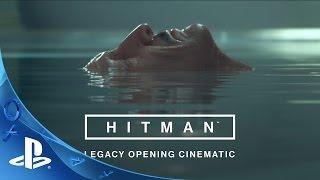
IMPRESSIVE! Testing the CHEAPEST FULL FRAME cooled astrophoto camera with TINY refractor!
Комментарии:

I have the ASI 2400MC Pro camera. It’s funny to hear you say under sampled with this camera, as on my setup I’m at 0.26”/pixel. 16”SCT@ 4,400mm focal length.
Ответить
👍👍
Ответить
The omega nebula looks almost more interesting than the eagle nebula :D Impressive that NGC 6604 is that bright. At least in stellarium there isnt really much to see. Gonna put omega on my target list!
Ответить
That camera looks pretty awesome but unfortunately is outside my price range for the foreseeable future, but I can dream. Would it work with something like the Samyang/Rokinon 135 f2 or would the stars be too blocky?
Ответить
I recently started drizzling with my ASI 2600mc and 102mm F7 Explore Scientific. The results are amazing, as you have demonstrated on the 6200. Drizzling has become my new best friend!
Ответить
I believe that nebula is Sh2-54 and it’s part of the open cluster NGC6604
Ответить
LDN386 Dark Nebula Your photo is far brighter than the Starry Night Pro Plus 8 astronomy star map picture
Ответить
It's awesome by the way I think I give the name dragon eye nebula dragon face nebula or dragon nebula.
Ответить
All good, but seriously, you need DeepSNR intill NXT has been updated.
Ответить
My forehand expectation is that drizzle x2 0.9 drop will sort blocking (take hours of processing and make your jpg's too big to share)..... I'm dithering every 3 subs and drizzling with APSC (2600duo on FF80) already. Is that "cheating"? That camera makes me drool!
Ответить
Amazing result!
I have been shooting with my at72edii telescope for a while and decided I want to get some close ups of galaxys. Invested in a 6" carbon star RC telescope and will be curious to see what it can do once the weather is cleared up.
Granted, I will need to update my mount once I have a budget for it, until then ... time to do some sketchy stuff, du dah, du dah ... hope I get away with it ...

au pays du riz, tu n'as plus assez de blé pour une touptek
Ответить
I think this camera would be a good match for my 65phq. :)
Ответить
I’ve imaged pretty extensively at 5-7”/px with camera lenses and the IMX571 sensor. My philosophy is that an ultra-wide FOV image shouldn’t be evaluated for its level of fine detail. Rather it’s about the depth of the image and the amount of nebulosity captured.
Ответить
Love how excited you are by this setup! Love it!
Ответить
Very beautiful image Quiv, great processing ! Really like the field of view you are having there with that setup. And I also really like the black color of this camera over the "Touptek Blue"
Ответить
I always drizzle. Started with a Canon EOS R (similar specs to this camera, 5.34 micron pixels) and lenses, added an Askar FRA300 and lately an ASI2600 MC Duo. Try using M54 throughout with full frame and have the filter as close to the sensor, as physically possible.
Ответить
👍👍👍👍👍👍👍
Ответить
Cuiv it is called the “Spooky Face Nebula” (not joking). I want to image it too soon when weather allows (Panama City, Panama).
Great videos always, carry on👍🏻👍🏻👍🏻

Thanks for your great video!
Ответить
Thank Cuiv.
Ответить
Focus Cuiv focus ha ha love that camera sadly out of my price range though but what a performer
Ответить
If you have a gap where you're looking for a video topic, I'd like a video about what an experienced astrophotographer's year is like. Do you revisit the same targets each year or wait for new equipment before revisiting an object? Do you get to a point where you start hunting for more difficult targets that you don't see other photographers going after? Do you keep your old subs or do the cameras change so quickly that the old data is a step down in quality? Do you have a long-term vision of all the objects you eventually want to image?
Ответить
Inspirational as ever, Aways food for thought, just love the new tech and how far it has evolved, great job with your presentations
👍👍.

"Sh2-54 belongs to an extended nebulosity that includes also the Eagle Nebula and the Omega Nebula." The wikipedia page for SH2-54 calls this the "Serpent's Nebula", probably because of it's proximity with the tail end of the Serpens constellation. I don't think people agree on that name though. The Friends of NASA page seems to call it "Serpent in the Sky" on their SH2-54 page, which has some interesting detail from the bright part.
Ответить
Haven't heard much about Touptek return policy or how to get a camera repaired or serviced in the USA.
Ответить
Absolutely fantastic video.
Ответить
So many good cameras, so many choices....
Ответить
The camera definitely looks like a good one, regardless of aperture size of your OTA. You have mad processing skills!
Ответить
Hi Cuiv :)
If you want a version of this camera that is monochrome, you can still try to debayer the sensor.
There are a few vendors that do it.
I might try this in the future if I stick to my Sigma FP-L :)

Since the Dawes Limit of a 51mm scope is 2.27", Is it really undersampled when you Drizzle it x2? Is there any benefit to having approximately 1" resolution if that is double the Dawes Limit of the scope, or would that in reality be over sampled?
Ответить
Very good video great picture ! I
Love it also !

I'm soooo imaging Sh2-54 now!
Ответить
I'm probably late to the party but that nebula you want to image is called The Scary Face Nebula. I did 31 hrs on it with the Redcat and Askar 65phq back in May. It's a cool target with a cool name.
Ответить
Nice video and good explane 👍🏻👍🏻
Love you video’s.
Greetings from the Netherlands 🇳🇱

Your excitement is always infectious and I always learn something from you/your content. Much appreciation for your continued contributions to the community.
Ответить
I knew you would LOVE this camera, however, I didn't expect that it was causing you to drool over it ... ha. I bought it for my Celestron EdgeHD 11", which it works fine, but I did put it on my little ED80T 480mm refractor, and like you, I was blown away. I then added the 0.8x reducer just to see what if ... again, I was blown away. Thank you for that tip on drizzling to get even better final results.
I hope your rains end soon, Guiv. Clear Skies.
- Patrick -

have this and yes, prefer it over the 6200Mc/MM version even at 420 mm focal length. file size is smaller than the 2600MC, computationally no issue drizzling, and the field of view works best with ultra wide (redcat, FRA300 and the 300 ish range), and also the other end with f/10 edge Hd and f/8 RCs and longer focal length RASAs. I use mine with an f/2.8 newt and its pixel-level entendue is huge - the fov compensates for the reduction in resolution as it is so wide it makes the concept of zooming to appreciate the image redundant (to me).
Ответить
Great post!
Ответить
i have the askar f4 200mm lens and its also perfectly corrected for a full frame sensor, i got similar great results with full frame camera. would love to see what 6200mc bin2 would look like with these shorter lens/refractors. SNR would be through the roof
Ответить
I use the Player One Zeus (ASI6200 equivalent, IMX455) with the Redcat 51. The Redcat has way more noticeable issues that are quite hard to fix (also my cat is not as good as yours, unfortunately). The smaller the pixels the harder they are to handle.
Ответить
SH2-54 why would it have a "proper name"?
Ответить
Not cheating, If you dither and drizzle to get your effective pixel size to 3 micron it puts you at at about 2.48 arcsec/pixel which is better than the Rayleigh Limit for a 51mm objective.
The cost for that is 4x the exposure time and loss of SNR which you covered in a recent GREAT video.
Sounds good right? Images are gonna be as detailed as your RedCat 51 can muster right?
Well, you mentioned the problem already. This is a color camera, and those calcs are for a monochrome camera.
So what's sensor resolution in color mode? If there a magic transform in Nina to dither a color sensor? To drizzle a color sensor? TBO I haven't looked to see. Software is amazing these days.
What's another option with a Petzuval refractor?
Time for another technical (extra geeky) video 😅😅 I know you ❤ those!
Now for practical purposes, with not so great atmospherics, I'd say the images will look OK.. not the best stars as they'll appear bigger than they should be, but for nebula in super wide FOV you can just tone the stars way down in post and get away with it. It's the really bright stars that will give you grief.
Ok.. gonna play on and see if there is magic color sensor dither and drizzle transforms. 😮😂

I'm considering one of these... I love my imx294 camera, but that much field of view would be a blast
Ответить
Hi Cuiv,
What do you think about the theory that slower optics can be just as fast when using a camera with larger pixels? For example, if I have a 65mm f/6.5 refractor paired with a camera like the ASI 294MC with 4.63-micron pixels, would it be as bright as using a 65mm f/5 refractor with the ASI 585 and its 2.9-micron pixels? If both telescopes have the same aperture and sampling, is it correct to say that the collected and projected light would be equal, resulting in equally bright images? I'm discussing this with a friend and would love to hear your opinion.

yes, that is ngc6604. Great field view!!
Ответить
Fabulous images!!
Ответить
I want to jump onto a new camera ff from micro four thirds but I do a bit of astro photography I have a douplet 500mm x80mm but I use a skywatcher 750pds wich I prefer I read that ff camera is no good for any of my scopes any ideas
Ответить
Like the video, however drizzling isn't free resolution, I see no additional detail when comparing screen shots of the drizzled and original Eagles; zooming in gives you blocky stars because of the default way it resamples, if you resampled the image instead of zooming, the stars would appear round. Maybe a good topic of experimentation to try for a video one day.
Ответить

























